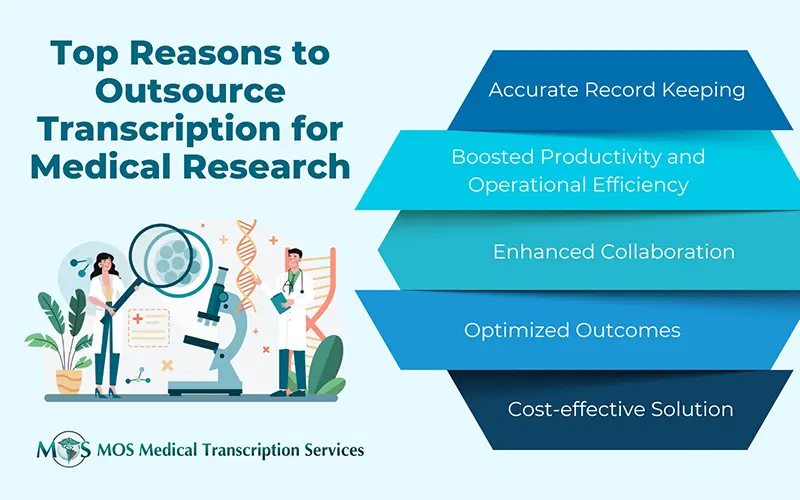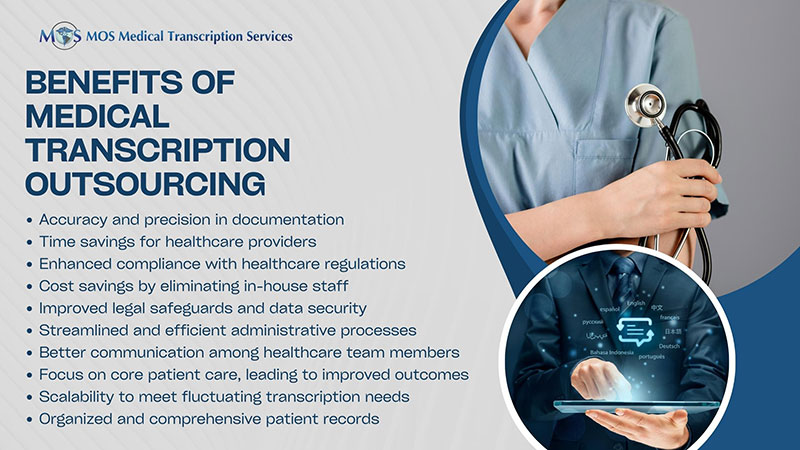
The patient–physician relationship is a key component in effective health service delivery, especially in this digital age. A trusting, informative relationship between the patient and the physician can promote patient compliance with the treatment. However, as the current healthcare environment is increasingly complex and puts pressure on providers to increase clinical productivity, physicians have less time for patients. While outsourcing medical transcription can help physicians manage the EHR documentation tasks, they need to focus attention on building a fruitful relationship with their patients in order to optimize care.
Successful Communication Improves Patient Outcomes
A study published in the Journal of Patient Care in 2021 found that the patient–physician relationship and shared decision-making has a positive impact on patient compliance with the treatment. When physicians communicate with patients in an effective and empathetic manner, they may be able to obtain more complete information, which can help them provide a more accurate diagnosis and also optimize care.
Effective physician-patient interactions offer many benefits:
- Supports early and accurate diagnosis: Effective communication can help providers obtain proper history from a patient, which is crucial to establish an accurate diagnosis. According to the National Center for Biotechnology Information, engaging patients who take an active role are more likely to provide the type of information providers need to make most diagnoses. Miscommunication can also lead to a medical condition going unnoticed.
- Helps in developing the treatment plan: An early and accurate diagnosis is necessary to develop the most appropriate and effective treatment plan. Clear, honest communication between patient and provider paves the way for treatment decisions.
- Promotes patient compliance: One of the key goals of communicating with the patient should be to provide the advice they need to set and achieve sustainable health goals. An effective patient-physician relationship is necessary to educate patients and make them understand the treatment plan, which will promote patient compliance and improve care.
- Builds patient trust and satisfaction: Good patient-provider relationships build patient trust. Studies show that patient trust is important for higher patient satisfaction scores (patientengagementhit.com). Strong communication skills are essential for providers to build patient trust.
Strategies for Building a Fruitful Patient-Physician Relationship
To optimize care, physicians need to focus attention not only on establishing an initial culture of trust with their patients and also to continue to foster that trust throughout the customer life cycle, according to Jason Burum, vice president of patient engagement and clinical effectiveness at Wolters Kluwer Health, (www.physiciansweekly.com). The focus should be on conducting patient-centered interviews.
Here are seven ways to improve patient–physician communication:
- Build rapport: Ensure a comfortable seating arrangement and maintain eye contact. Use good non-verbal and verbal skills and speak at a proper speed show empathy and warmth, and maintain an engaging tone of voice that reflects genuine interest in the patient. This will help your patient feel comfortable with you.
- Ask open-ended questions: With open-ended questions, patients will reveal more details. Using proper Interviewing techniques will help busy physicians effectively obtain a complete medical history and other relevant information. ACOG says that physicians can consider hiring nonphysician health care providers, such as advanced practice nurses or physician assistants, with patient-centered interviewing skills to assist with established patients.
- Listen: Listen actively and pick up leads from what the patient says or does. To help patients prepare for the appointment, ACOG recommends asking them to write down their questions in advance. This can promote conversation on topics important to the patient. Always ask for clarification where necessary.
- Pay attention to non-verbal cues: There are two aspects in nonverbal communication during the medical consultation – the non-verbal behavior of the patient and the non-verbal behavior of the physician. Physicians need to focus on understanding patients’ non-verbal cues to pick up patients’ non-verbal cues in their conversation, facial expressions, and body posture. Likewise, they need to know how their own non-verbal behavior such as eye contact, body position and posture, movement, facial expression, and use of voice can impact the success of the consultation.
- Avoid use of jargon: Use simple language when talking to patients. Medical jargon confuses patients and can lead to alienation and misinterpretation and misunderstanding.
- Technology: Effective use of online technologies can improve physician-patient communication. Smartphones, apps, chat boxes, email, electronic health records, patient portals and telemedicine systems can be used to share information, allowing providers and patients to interact at any time, from anywhere. By creating an open dialogue between patients and physicians, technology can build trust and strengthen their relationship. Health information technology systems should comply with the Health Insurance Portability and Accountability Act (HIPAA) rules as well as state privacy laws.
- Patient education: Patient education is critical to for an effective patient-physician relationship. The American Academy of Family Physicians (AAFP) defines patient education as “the process of influencing patient behavior and producing the changes in knowledge, attitudes and skills necessary to maintain or improve health”. Physicians should ensure that patients have a better understanding regarding their diagnoses and treatment options as well as general wellness and preventative care. Health literacy can empower patients and help them make rational health choices.
A fruitful patient-physician relationship is clearly the key to optimizing care. It could also reduce physician burnout, according to a survey conducted by Merritt Hawkins on behalf of the Physicians Foundation. Up to 79 percent of physicians said patient relationships are their greatest source of job satisfaction. The survey reported that inefficiency of EHR use is the leading source of clinician burnout. It can also affect physician patient communication. Outsourced medical transcription services are an ideal way to address this. With a competent service provider handling their EHR documentation tasks, physicians can focus on what really matters – building a positive relationship with patients to optimize care.


